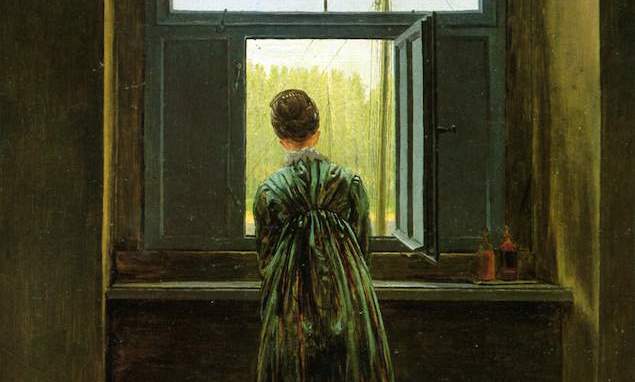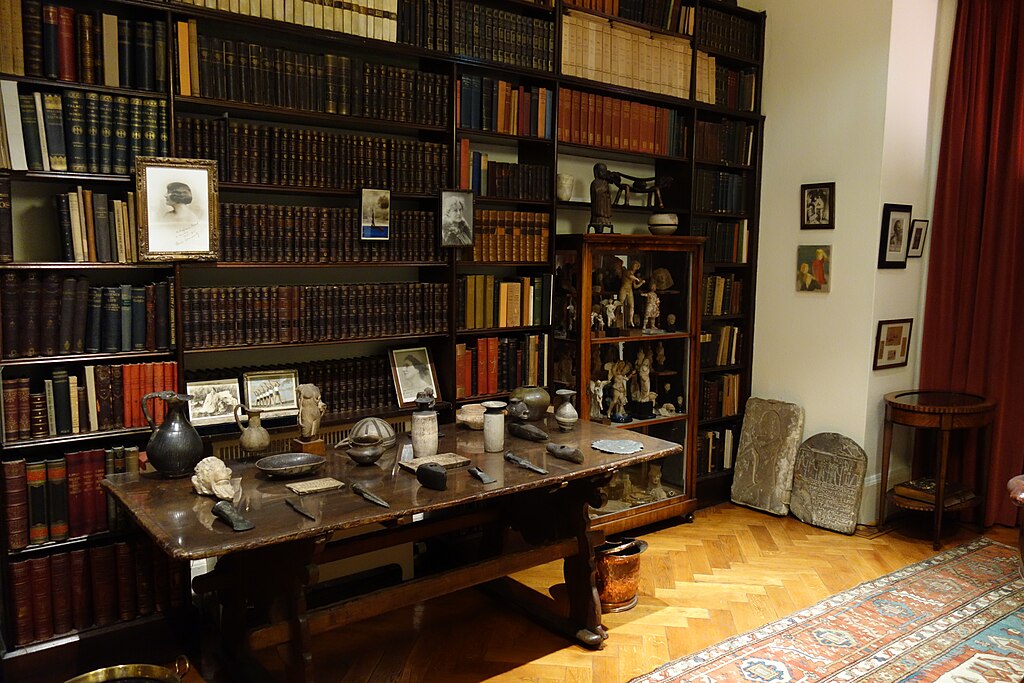Leisure • Art/Architecture
Caspar David Friedrich
One of the unexpectedly important things that art can do for us is teach us how to suffer. It can do so by evoking scenes that are dark, melancholy or painful, and that normalise and lend dignity to the suffering we may ourselves be experiencing in isolation and confusion. They reveal – with grandeur and technical skill – that grief belongs to the human condition.
Caspar David Friedrich, a painter of sublime sadness, was born in 1774 in Greifswald, an ancient trading town in the far north of Germany, on the Baltic coast. It was a beautiful place in a severe, northern sort of way. As a child he loved the way the pinnacles, spires and towers of the town loomed up above the trees in the haze of very early summer mornings.
Meadows near Greifswald, 1822
His father was a modest artisan of few words and little warmth. His beloved mother died when he was only a young child. When he was thirteen, he saw his younger brother, Johann Christoffer, fall through the ice of a frozen lake and drown.
Self-Portrait, 1800
He grew up taciturn, intense and shy. He was trained as a painter from an early age, but it was many years of poverty and hardship before his own distinctive style began to emerge. The taste of the era favoured sunny, classical landscapes. Italy in summer was the ideal. But Friedrich was drawn to aspects of nature that – up to that point – people had thought of as disagreeable and uninteresting: cold damp mornings; glacial nights by the sea; the pale hour before the sun rises; the flooded fields of late spring.
The Grosse Gehege, near Dresden, 1832
Friedrich’s first mature work – the first big picture in which he started to present his own view of life – was a shock to his contemporaries. Instead of the conventional angels, weeping saints and soldiers he depicted the crucifixion of Jesus as happening on top of a mountainous crag amidst Teutonic fir trees, with the sun’s rays striking the clouds behind.
Cross in the Mountains, 1808
Friedrich realised then that nature could express many of the solemn moods previously associated with a literal rendition of the Christian story. With time, he dispensed with direct references to Jesus altogether, but he kept the atmosphere of tragedy and grief associated with his life and death. He found that tall trees, mountains, mists, jagged reefs, the rising of the moon, the stillness of water at night, open heathland and fog could carry many of the same messages about pain, love, suffering and redemption as Christian theologians had once found in the Gospels. He remains a painter uniquely suited for those who no longer believe, but are attracted to the serious emotions that accompany belief.
Landscape with Graves, 1835-7
In 1818, when he was 44, Caspar David married 25-year-old Christiane Caroline Bommer. They had three children: two daughters, Emma and Agnes Adelheid, and a son, Gustav Adolf. It seems to have been, on the whole, a good relationship. Caroline appears in many of his pictures, but always alone. He was drawn to painting men and women on their own, as if what is most important about us only comes to the surface when we are away from the chatter of civilisation. He himself had only a handful of friends and almost never left his simply furnished studio.

Woman before the Rising Sun, 1818-20
Woman at a Window, 1822
The Wanderer above the Sea of Fog, 1817-18
Instead of solitude being something to evade (with business, drink, or sexual fantasies), Friedrich suggests it as a state that brings us into contact with our deepest possibilities.
He also believed that the harshness of nature could put the sorrows of the human condition into a consoling, redeeming perspective.
The Sea of Ice, 1824
Humans can be as cruel, fate can be as remorseless, but contemplating the ineluctable collision of ice packs takes us out of ourselves, beyond the particular envy, wound or disappointment that is tormenting us, reducing our sense of personal persecution.
Moonrise over the Sea, 1822
Works like Moonrise over the Sea, make us aware of our insignificance, exciting a sense of how petty man’s disasters are in comparison with the ways of eternity, leaving us a little readier to bow to the incomprehensible tragedies that every life entails. From here ordinary irritations and worries are neutralised. Rather than try to redress our humiliations by insisting on our wronged importance, we can – through the help of a great art work – endeavour to apprehend and appreciate our essential nothingness.
Rocky Reef on the Sea Shore, 1824
Here Friedrich uses a striking, jagged rock formation, a spare stretch of coast, the bright horizon, far away clouds and a pale sky to induce us into a mood of redemptive sadness. We might imagine walking in the pre-dawn, after a sleepless night, on the bleak headland, away from human company, alone with the basic forces of nature. The smaller islands of rock were once as dramatic and thrusting as the major formation just beyond. The long, slow passage of time will, one day, wear them down as well. The first portion of the sky is formless and empty, a pure silvery nothingness, but above them are clouds which catch the light on their undersides and pass on in their pointless, transient way, indifferent to all of our concerns.
The picture does not refer directly to our relationships or to the stresses and tribulations of our day to day lives. Its function is to give us access to a state of mind in which we are acutely conscious of the largeness of time and space and of the insignificance of our situation within the greater scheme. The work is sombre, rather than sad; calm, but not despairing. And in that condition of mind – that state of soul, to put it more romantically – we are left, as so often with Friedrich’s work, better equipped to deal with the intense, intractable and particular griefs that lie before us in the days ahead.
Like many artists, Friedrich was not terribly successful. He was admired and his work purchased by a small number of serious people (and two of the most delightful painters of the era, Kersting and Dahl, were his friends). He died in his mid-sixties, in 1840, almost forgotten.
Georg Friedrich Kersting, Caspar David Friedrich in his Studio, 1819
He did not know how that, in the distant future, his work would be deeply admired – not because it cheers us, but precisely because it knows how to reframe and express the saddest parts of all of us.






























